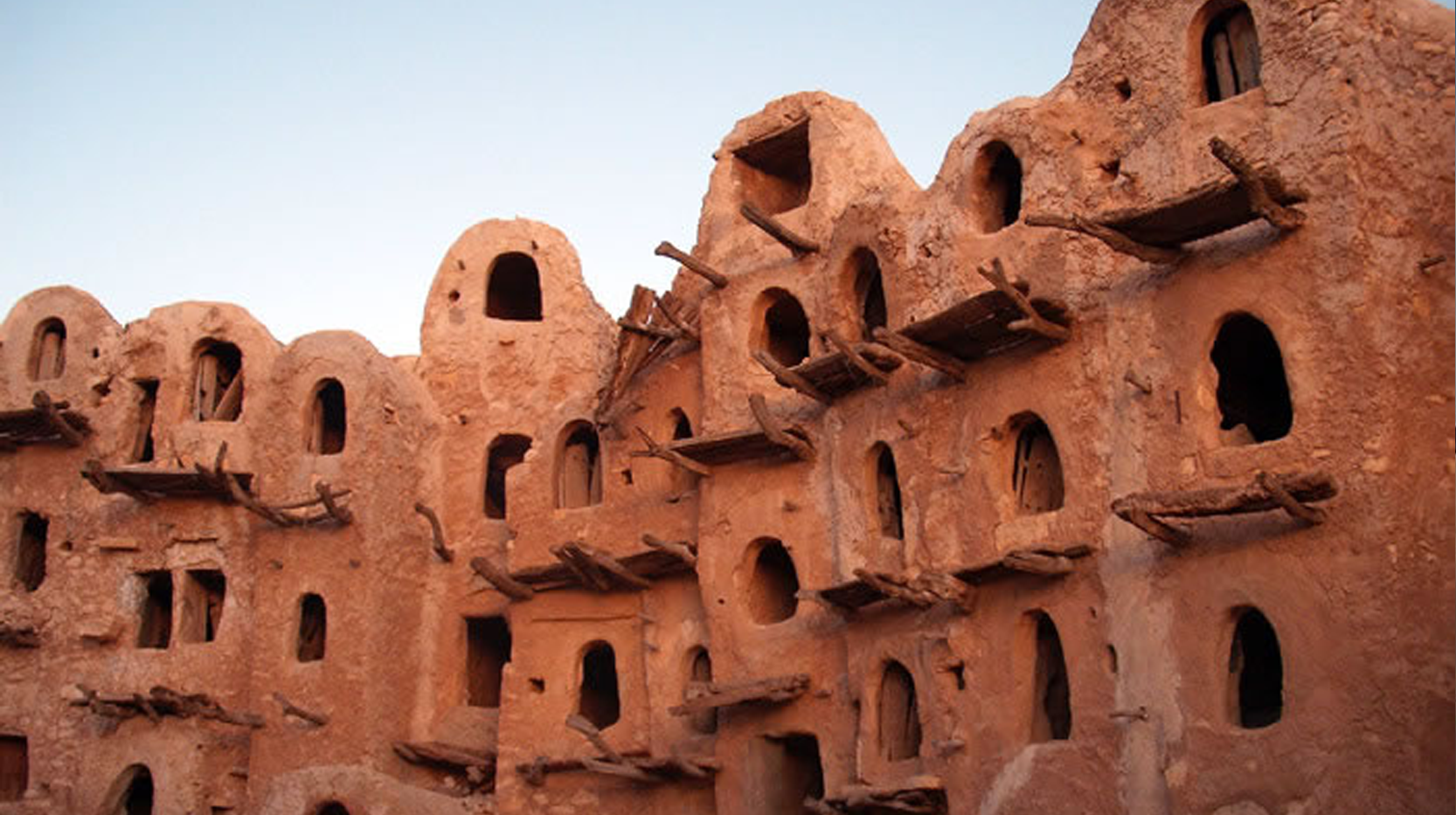
An Amazigh settlement on top of the Western Mountains in the Nalut district of northwestern Libya, the Kabaw Fort - “Qasr Kabaw” in Arabic - is determined to be at least 900 years old. The fort is built as a “ghorfa” - or granary - shaped in a circle, with a diameter of 20 meters and a height of 18 meters. Six floors and approximately 360 rooms were meant to house foods as storage for months between harvests, which would have included dates, oil, figs, wheat, and barley.
Made of stone, gypsum, and red mud, the fort consists of guard rooms at the gate, which were tasked with protecting the goods for local consumption from thieves. Each chamber - which was owned by individual families - opens to the center, is made of palm trunks and olive branches for the roofs, and is covered with a water-proof adobe layer. This was designed to keep rodents, insects, and the elements from damaging the goods inside.
While the Kabaw Fort is a notable landmark in the Western Mountains, there are many such forts spread across Libya. In turn, buildings like these can be found across North Africa, where Amazigh tribes have lived for millenia. Such forts are considered to be characteristic of Amazigh architecture, and are built on hilltops or mountaintops as a means of protecting the city. Taking place almost every year in April, the local Spring Qasr Festival celebrates Libya’s Amazigh history.
For more information and a virtual tour of Kabaw Fort, click here.
Sources:
“Kabaw Palace,” Libya Observer, 16 April 2021, https://www.libyaobserver.ly/travel/kabaw-palace.
“Kabaw,” Temehu, accessed 4 May 2021, https://www.temehu.com/Cities_sites/Kabaw.htm.
“Tamazight in Arabic: History of Kabaw (Part 1),” 218 TV, 26 July 2017, https://www.youtube.com/watch?v=RzuKumdWP8A.
Photo courtesy of Temehu.

